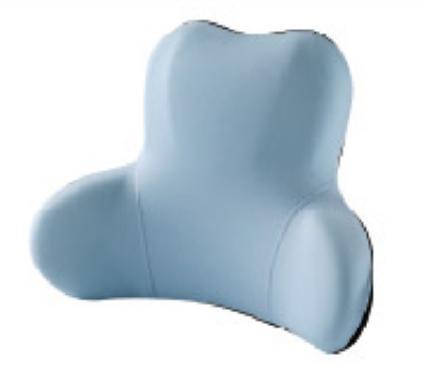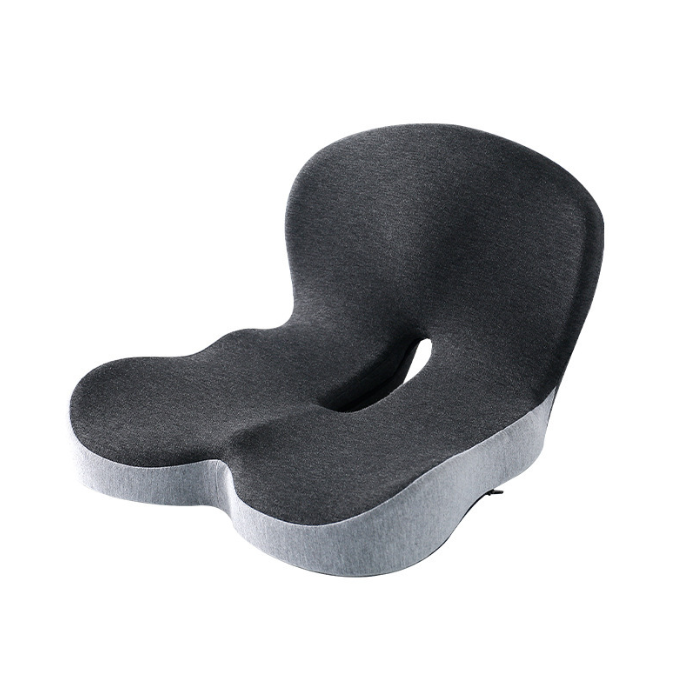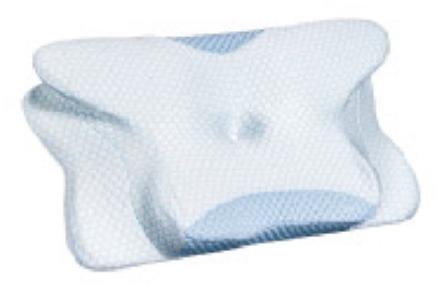Driving for extended periods can take a toll on your body. Even a short commute can leave you feeling stiff, sore, and tired by the end of the day. Though most modern vehicles boast seats designed to be generally comfortable, not every driver finds them comfortable, especially when travelling for quite a while. Lower back support, tailbone pressure, and long-term posture are some of the issues that arise. And this is where μαξιλάρια καθίσματος αυτοκινήτου come in handy.
Car seat cushions come in various designs and materials, all aimed at improving comfort and reducing fatigue, while some even purport to prevent chronic pain; from memory foam and gel cushions to ergonomic or orthopedic designs, the market has almost all preferences covered.
Knowing what they actually do, what benefits they really can offer, and how to choose the right cushion would really matter for anyone who spends long hours in a car.
Why Car Seat Cushions Are Useful
Most standard car seats are designed with a “one-size-fits-all” approach. They are generally sufficient for short trips, but when driving for hours on end, pressure points develop in the lower back, hips, and tailbone. Blood flow can become restricted, and sitting in an awkward position for long periods can lead to stiffness and discomfort. Car seat cushions address these issues by redistributing weight, supporting the natural curvature of the spine, and sometimes adding cooling or padding for increased comfort.
The main benefits include:
-
Reducing lower back pain: Cushions provide lumbar support to keep the spine aligned.
-
Relieving tailbone pressure: Some cushions have a cut-out or contour to prevent direct pressure on the coccyx.
-
Improving circulation: Slight elevation or ergonomic shaping can reduce leg numbness.
-
Enhancing overall comfort: Soft or gel surfaces can make long drives more enjoyable.

Materials and Construction
Car seat cushions vary widely in materials and design. The choice of material directly affects comfort, durability, and support. The most common materials include:
| Material | Description | Benefits | Typical Use |
|---|---|---|---|
| Αφρός μνήμης | High-density polyurethane foam that molds to the body | Personalized support, pressure relief | Long drives, chronic back pain |
| Gel-Infused Foam | Memory foam with a gel layer for cooling | Reduces heat buildup, soft yet supportive | Hot climates, summer drives |
| Orthopedic Foam | Firmer foam designed for spinal alignment | Encourages proper posture, reduces chronic pain | Professional drivers, posture improvement |
| Inflatable Air Cushions | Adjustable air chambers | Customizable firmness, portable | Short trips, temporary support |
| Natural Fibers (wool, sheepskin) | Breathable and soft | Temperature regulation, softness | Winter comfort, aesthetic appeal |
The surface shape and density of the cushion also play a significant role. A highly contoured cushion can distribute weight evenly, while softer, plush designs prioritize comfort over spinal support.
How Cushions Help
- Pressure Redistribution
Tissue compression happens in the pelvic and lower back areas due to sitting for long durations. Pressure redistribution from sensitive spots, particularly the coccyx and ischial bones, through proper car seat cushion design will reduce pain and aches. - Spinal Alignment
A pad that bolsters the lower back promotes the natural S-curve of the spine. In the absence of lumbar support, the lower back slouches. This throws pressure on discs as well as muscles; it can cause strain and pain over time if not taken care of in due time. - Circulation and Fatigue
Some cushions slightly raise the thighs͏, which may promote better circulation of blood in the legs. Good circulation decreases numbness, avoids swelling, and makes long drives less associated with fatigue. - Thermal Comfort
Certain materials comprise gel-infused foam and natural fibers that assist in regular temperature conditions. Heat piling up on a foam cushion will lead to discomfort after some time͏, thus breathability or cooling properties are an important consideration for longer drives.
Types of Car Seat Cushions
Memory Foam Cushions
Memory foam cushions are soft and moldable, contouring to the shape of the body. This reduces pressure points and supports the pelvis and lower back.
Advantages: Excellent comfort, molds to individual shape, durable over long-term use.
Disadvantages: Can retain heat, may feel too soft for some users, heavier than air cushions.
Gel Cushions
Gel cushions combine foam support with a cooling gel layer, providing pressure relief and reducing heat accumulation.
Advantages: Temperature regulation, excellent shock absorption, maintains comfort on rough roads.
Disadvantages: More expensive, less portable.
Orthopedic Cushions
Firmer cushions designed for spinal alignment can prevent slouching and reduce chronic back pain. Often recommended for professional drivers or anyone with posture concerns.
Advantages: Encourages healthy posture, alleviates lower back strain.
Disadvantages: Less plush, may feel stiff initially.
Inflatable Cushions
Air-filled cushions allow the user to adjust firmness by inflating or deflating chambers. Lightweight and portable, they are convenient for travel or temporary use.
Advantages: Adjustable, portable, lightweight.
Disadvantages: Risk of leaks, less durable than foam.
Evidence from Research and Experience
Several studies have examined the effect of car seat cushions on driver comfort and health:
-
Pressure Distribution Studies: Memory foam and gel cushions have been shown to reduce peak pressure points by 25–30%, decreasing discomfort over long drives.
-
Posture Improvement: Cushions that support lumbar curvature help maintain spinal alignment, reducing muscle fatigue.
-
User Feedback: Drivers report lower back pain, improved alertness, and decreased leg numbness after using supportive cushions.
Real-life case examples include:
-
Truck Drivers: Gel or memory foam cushions reduced tailbone pain and improved circulation during 8–12 hour shifts.
-
Daily Commuters: Orthopedic lumbar cushions improved posture and reduced stiffness in the lower back.
-
Older Drivers: Cushions increased overall comfort and reduced pressure-related soreness, making driving safer and more enjoyable.
Choosing the Right Cushion
Selecting the right cushion depends on several factors:
-
Body type: Taller or heavier individuals may need longer or denser cushions.
-
Driving duration: Daily commuters may prefer softer memory foam, while long-distance drivers benefit from firmer orthopedic options.
-
Climate: Gel-infused or breathable cushions are ideal for warmer climates.
-
Portability: Inflatable cushions are easy to store or carry between vehicles.
Placement and Usage Tips
-
Ensure the lumbar support aligns with your lower back.
-
Do not over-stack cushions, as it may alter seatbelt positioning.
-
Keep feet flat and adjust the seat to maintain a natural posture.
-
Take breaks every 1–2 hours to stretch legs and reduce stiffness.
Maintenance
-
Memory foam: Spot clean, avoid soaking.
-
Gel cushions: Wipe down with a damp cloth.
-
Inflatable cushions: Keep valves clean, check for leaks.
-
Covers: Machine-washable covers prolong lifespan and hygiene.
Car seat cushions do enhance comfort, but cannot fully rectify poorly designed seats. If they are overly thick or not properly aligned, they may exacerbate posture issues or create problems for seatbelt safety. Results vary with individual body shape, pre-existing conditions, and driving habits.
Car seat pads do much to increase comfort for long drives and adjust support to spinal alignment, relieving pressure, and are good for individuals with back problems. Choose the pad that fits your body, driving style, and environment. They are not replacements for ergonomic seats, but when used properly, they can make driving very comfortable and eliminate or reduce long-term fatigue or pain.



